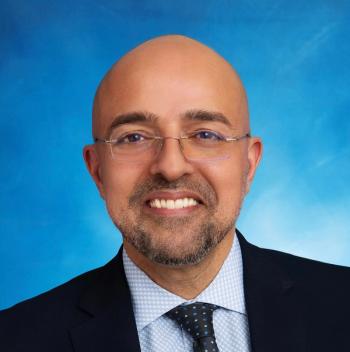
Nurses in hospitals: Burnout by the bedside | Special Report
Many nurses say they are struggling with their mental health, largely because they are overworked and understaffed. Nurses are imploring healthcare leaders to take action.
While more attention is being paid to burnout among physicians, and appropriately so, nursing leaders say the mental health of nurses merits more attention.
Nurses say they are continuing to struggle with burnout, and they are increasingly frustrated with being overworked and understaffed.
Throughout the COVID-19 pandemic, nurses said
Today, too many nurses say they don’t feel supported, and that’s why many have left bedside roles in hospitals, says Rebecca Love, an advocate for nursing reforms and member of the Commission for Nurse Reimbursement.
“We were coming out of the pandemic, everybody was exhausted,” Love tells Chief Healthcare Executive®. “But the nurses were still tending to row in the direction of staying with their health systems. And I think what we've seen unfold in the last year is a substantially worsening of their environments, and also within their ability to continue working in those environments.”
Undeniably, nurses are showing their dissatisfaction. The
The majority of nurses (56%) said they are experiencing burnout, and roughly 2 out of 3 nurses (64%) said they feel “a great deal of stress” at work. Nurses also say they are dealing with more episodes of violence in hospitals, making them less safe and further adding to the strain on their mental health.
Nurses have shown they are willing to walk off the job to change their working conditions and get better pay. Thousands of nurses joined
While compensation and benefits were certainly elements of those walkouts, nurses held out for concessions on better staffing, and made clear they needed more help to protect patients and their own mental health.
Vicki Good, chief clinical officer of the American Association of Critical-Care Nurses, tells Chief Healthcare Executive that many nurses continue to struggle.
“What nurses are telling us right now is they love their work, but they don't like the environment, and what's going on in the hospital environment right now,” Good says.
A haunting letter
The letter struck a chord with nurses around the country, and gained national attention.
Tristin Kate Smith, 28, an emergency nurse in Dayton, Ohio, died by suicide in August 2023. Two months later,
Titled, “A Letter to my Abuser,” Smith wrote about her experiences as a nurse and the lack of support for nurses in the industry.
“You made me feel comfortable, despite the rumors of your abusive past, rumors I didn’t want to believe,” she wrote. “The compliments, the pizzas and the thank you letters gradually had less meaning to me, though. The staff I worked beside began to go away.”
In describing the toll, she wrote, “You beat me to the point that my body and mind are black, bruised, and bleeding out.” She added, “I’m only sorry to my patients and colleagues. You deserve so much better, but my abusive partner is relentless.”
Love cited the impact of the letter and its warning of the toll on nurses across America.
“I think what is absolutely imperative in this conversation is to recognize that nurses are taking their own lives because of the systems that they work in,” Love says.
“Something is seriously wrong,” she continues. “And that is why I can't stand here today and tell you that I think things are better. I think things are worse. And I think if nurses are taking their lives, that is the failure of the environments, and we need to do something differently than what we're doing.”
Many nurses say they are worn down by the lack of staffing. Renee Saldana, a spokeswoman for the Service Employees International Union-United Healthcare Workers West (SEIU-UHW), says that’s a routine complaint she hears from nurses. California has a state law requiring minimum nurse staffing levels, but some nurses say that their employers don’t always comply with the law, Saldana says.
“I've heard from RNs saying that their employer doesn't follow the staffing ratios,” she says. Some nurses say they’re managing more patients than they should.
“They're concerned about staffing sticking to the staffing ratios,” Saldana says. “They don't want to have to lose their licenses or put them or their patients in precarious situations because they are rushing around caring for so many patients.”
With some experienced nurses leaving bedside roles, hospitals are relying on nurses with less experience. The median nurse working a 12-hour shift possessed 2.78 years of experience in March 2022, down from 3.58 years in March 2021, according to an
Nurses with less experience need seasoned colleagues that can help them process the death of a patient, or to take lessons from a “near-miss” event and move forward, Love says.
For some younger nurses at the bedside, “There's nobody with 30 years of experience to be standing next to you.”
Concerns of violence
Nurses are facing physical assaults in hospitals with alarming regularity. More than two nurses are assaulted every hour, and 57 assaults on nurses occur each day, according to a report from
In an August 2023 interview with Chief Healthcare Executive, Terry Foster, then-president of the Emergency Nurses Association, said he has spent more than four decades as a nurse, and he couldn’t remember seeing so much violence.
“Violence in the emergency department for nurses is a tremendous problem,” Foster says. “It's something that I've never seen before at this level.”
After the brutal assault of a nurse at Rhode Island Hospital, the
Again, the levels of staffing play a role in some issues. Some nurses are forced to try and restrain patients if there are limited security staff, Saldana says. Some also say that understaffing means fewer people are watching patients who could be acting out, she adds.
Signs of hope
While contract battles have underscored the tensions of nurses and health systems, some nursing leaders say recent nursing contracts offer some hope for better working conditions.
Love points to the fact that even when nursing unions and management agreed on financial terms of some pacts, nurses didn’t ratify new contracts until there were provisions to improve staffing levels.
“They're fighting not about the money, but for them to be able to continue to practice,” Love says. “They need to know that they can walk into a situation and safely manage the patients that they have so that those patients will not die. And that is what they're saying and that is what they're fighting for.”
When Kaiser Permanente and healthcare workers agreed on their new contract in October, the deal included provisions to bolster staffing throughout the system. The pact included training opportunities for workers to advance, as well as a joint staffing progress so workers and managers can set appropriate staffing levels. There will be an “accelerated hiring process” to hire new workers more quickly, union leaders said.
The Kaiser deal could serve as a model for other healthcare contracts, Saldana says. “We know that Kaiser is a leader,” she says.
More systems are also turning to “virtual nursing” programs to help support their nurses at the bedside. Hospitals and health systems are using nurses working remotely to answer questions from patients or go over discharge instructions, allowing bedside nurses to focus more on direct patient care.
Love views virtual nursing as a promising development for the industry. As an added bonus, virtual nursing can appeal to longtime employees who want to stay in nursing, but may not feel as comfortable working long shifts at the hospital.
“You're taking off the administrative burden of the floor nurse who is hanging the IVs, changing the wounds, doing the CPR,” Love says.
Some nursing leaders are also pointing to
Kate Judge, president of the American Nurses Foundation, told Chief Healthcare Executive in a recent interview that healthcare leaders and policy makers need to do more to support nurses.
“It's imperative that nurses be engaged and supported,” Judge says. “And the benefit is to patient care and to the system of delivering healthcare, because if we don't support nurses, we will not have quality healthcare.”
Getting help







































